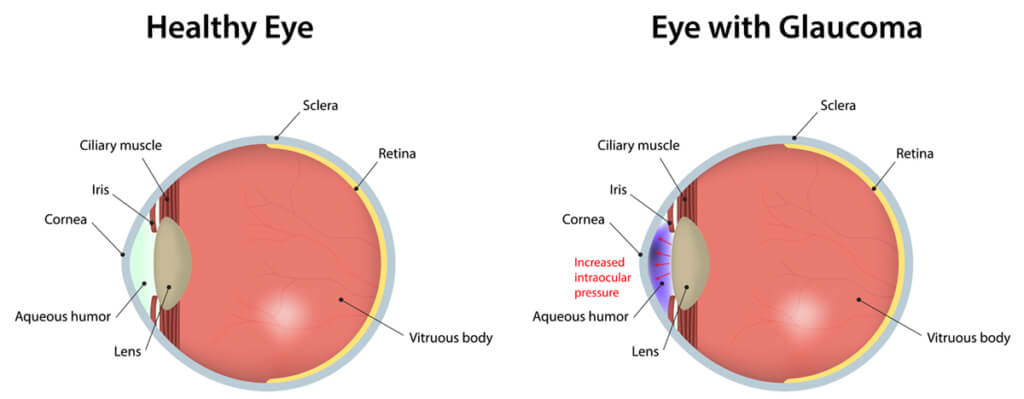Are MIGS Procedures Better than Traditional Glaucoma Surgeries?
Do you or someone you love have glaucoma? Eye drops or laser therapy are usually the first treatment options for glaucoma.
When these don’t lower your intraocular pressure (IOP), your optometrist or ophthalmologist may recommend minimally invasive glaucoma surgery (MIGS). Minimally invasive glaucoma surgery is a group of state-of-the-art glaucoma procedures that are much less invasive than conventional glaucoma procedures.
These procedures work by increasing the outflow of the aqueous humor, which helps reduce eye pressure. Keep reading to learn more about glaucoma and whether MIGS procedures are better than traditional glaucoma surgeries.
What is Glaucoma?

Glaucoma is a group of eye conditions that damage the optic nerve. The optic nerve connects the brain to the eye, which enables you to see.
Damage to the optic nerve is irreversible, leading to vision loss or total blindness when left untreated. One of the leading causes of glaucoma is high eye pressure.
Your eyes are filled with a clear fluid known as the aqueous humor. The ciliary body in your eye constantly produces new fluid while old fluid exits through the trabecular meshwork.
The new fluid replaces the older fluid, maintaining optimal eye pressure. If the ciliary body makes too much fluid or the drainage system in your eye is blocked, fluid can build up and increase intraocular pressure. High eye pressure is what destroys the optic nerve, causing vision loss.
Glaucoma is asymptomatic, meaning it often happens without obvious symptoms. You can have glaucoma and be completely unaware of it.
The only way to detect and diagnose glaucoma is by having eye exams. Because glaucoma is irreversible, you cannot reclaim vision lost due to it.
However, you can preserve your remaining vision with prompt diagnosis and treatment. You can treat glaucoma using eye drops, pills, laser therapy, and surgeries.
What is MIGS?
MIGS are procedures that use micro-surgical techniques to place microscopic-sized devices inside your eye. These procedures are designed to reduce the risk of complications associated with conventional glaucoma surgeries like a trabeculectomy.
MIGS procedures encourage fluid drainage out of your eye, decreasing eye pressure that damages the optic nerve. With MIGS, you can reduce the medications needed to control glaucoma.
MIGS may also decrease the likelihood of requiring more invasive procedures. These procedures can be done during cataract surgery and typically add only a few minutes to the total procedure time.
What are Traditional Glaucoma Procedures?

Eye drops are usually the first line of treatment for glaucoma. But they may not always be enough to lower your eye pressure effectively.
When that’s the case, your optometrist or ophthalmologist at Eye Consultants of North Dakota may recommend glaucoma surgery. Traditional glaucoma procedures include trabeculectomy, electrocautery, viscocanalostomy, and deep sclerectomy. These procedures help decrease fluid and pressure in your eye and slow or prevent further vision loss.
MIGS vs. Traditional Glaucoma Surgery
Here’s a comparison of traditional glaucoma procedures:
Pressure-Lowering Effect
Compared to MIGS, traditional glaucoma procedures have the most substantial pressure-lowering effect. They are the gold standard in the following situations:
- Glaucoma that won’t respond to medications
- You have more advanced glaucoma
- You have very high intraocular pressure
Conventional glaucoma surgery can lower intraocular pressure and slow or even stop glaucoma progression in these cases. MIGS may be right for you if you have mild to moderate glaucoma and prefer a minimally invasive surgical treatment approach. These procedures usually work best for patients with mild to moderate glaucoma.
Recovery Time
Conventional glaucoma procedures are more invasive, leaving patients with a longer and more intense recovery. MIGS is minimally invasive.
Because of this, patients deal with fewer complications, MIGS procedures are less traumatic to the eye tissue, and there is little downtime, especially compared to traditional glaucoma procedures.
Types of MIGS Procedures Available at Eye Consultants of North Dakota
There are many MIGS procedures available. At Eye Consultants of North Dakota, we offer our patients the following:
iStent inject W
iStent inject W can be an excellent option if you have mild to moderate glaucoma and are preparing for cataract surgery. iStent inject W is one of the tiniest medical devices implanted in the human body.
It comprises two surgical-grade titanium stents that help reduce your eye pressure, which can slow or prevent glaucoma progression.
How iStent inject W Works
You’ll have two small stents placed in your eye during cataract surgery to help lower your eye pressure. Once implanted, you won’t feel or see the stents.
They are implanted in the trabecular meshwork in two different locations, creating permanent openings or bypasses through this blocked drain. These bypasses restore your eye’s ability to drain the aqueous humor, which helps improve glaucoma control.
After the procedure, many patients can reduce or eliminate their dependence on glaucoma medications, improving their quality of life.
iStent infinite
iStent infinite is an implantable device that helps reduce intraocular pressure in patients with primary open-angle glaucoma. It’s often most successful in patients who have not been able to control their IOP using traditional methods like eye drops or other medication.
iStent infinite is the first of its kind micro-invasive alternative that uses three anatomically designed stents preloaded into an injector system. Doing this creates a broader range of coverage and helps to reduce intraocular pressure.
Micropulse Cyclophotocoagulation (CPC)
Micropulse CPC is a laser procedure that reduces intraocular pressure by changing the ciliary body, which makes the aqueous humor. The procedure uses cutting-edge laser technology to deliver short, cyclic, low-energy pulses to the ciliary body.
How Micropulse CPC Works
Micropulse CPC involves the slow application of laser energy. The laser energy is chopped into bursts or micro pulses.
Every pulse heats the ciliary body but doesn’t destroy or burn it. There are short pauses in between every pulse.
These pauses let the ciliary body cool off, which allows it to change without destroying it. Micropulse cyclophotocoagulation reduces fluid production by the ciliary body while increasing drainage and decreasing eye pressure.

Ensure a Future with Clear Vision After MIGS
Eye Consultants of North Dakota offers several options for MIGS. Each procedure uses the most advanced technology to ensure the best possible outcomes.
Our goal is to protect your eyesight and improve your quality of life. Are you ready to find out if MIGS is right for you? Schedule your appointment today at Eye Consultants of North Dakota in Fargo, ND, now!



